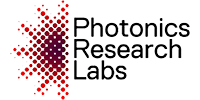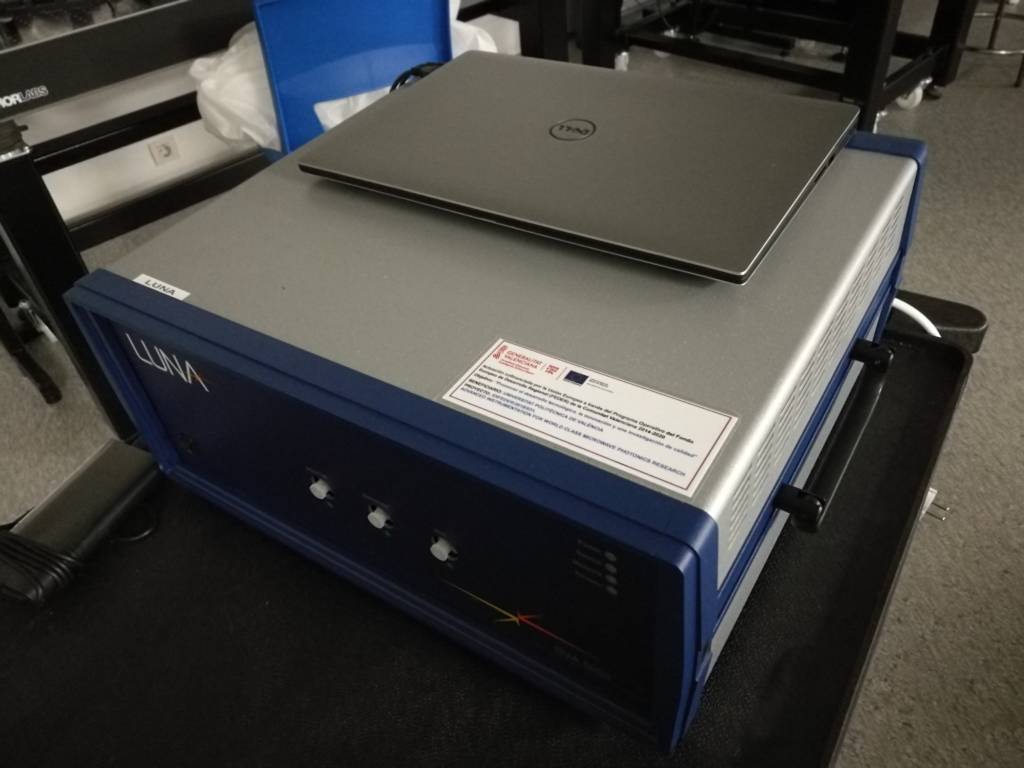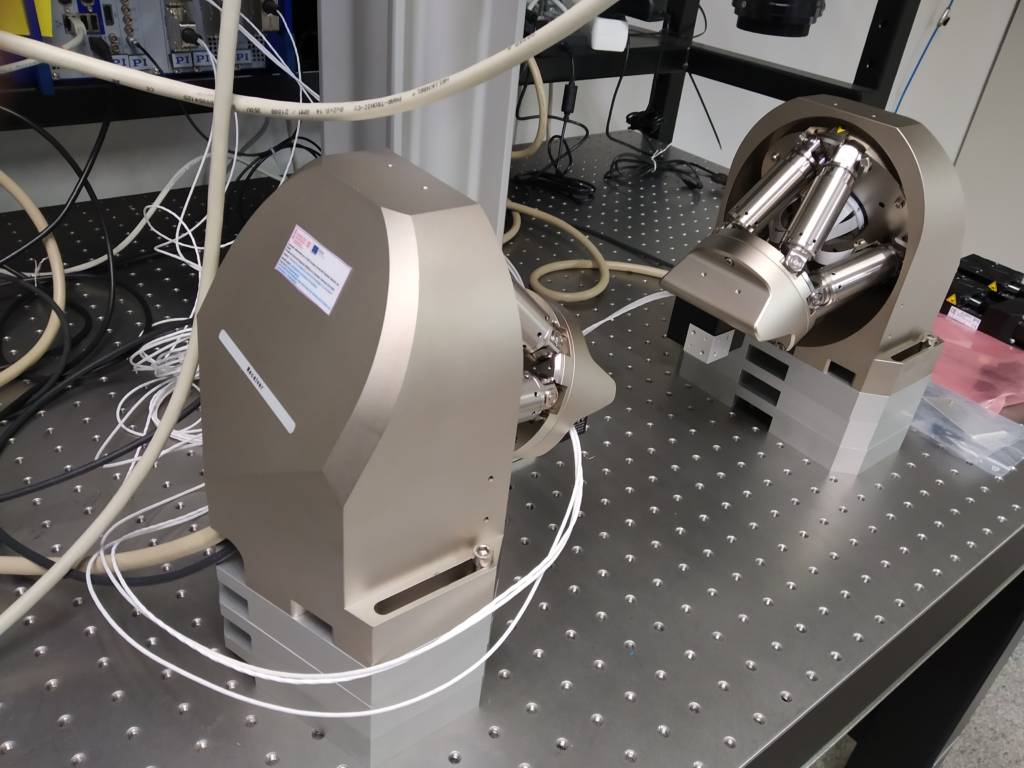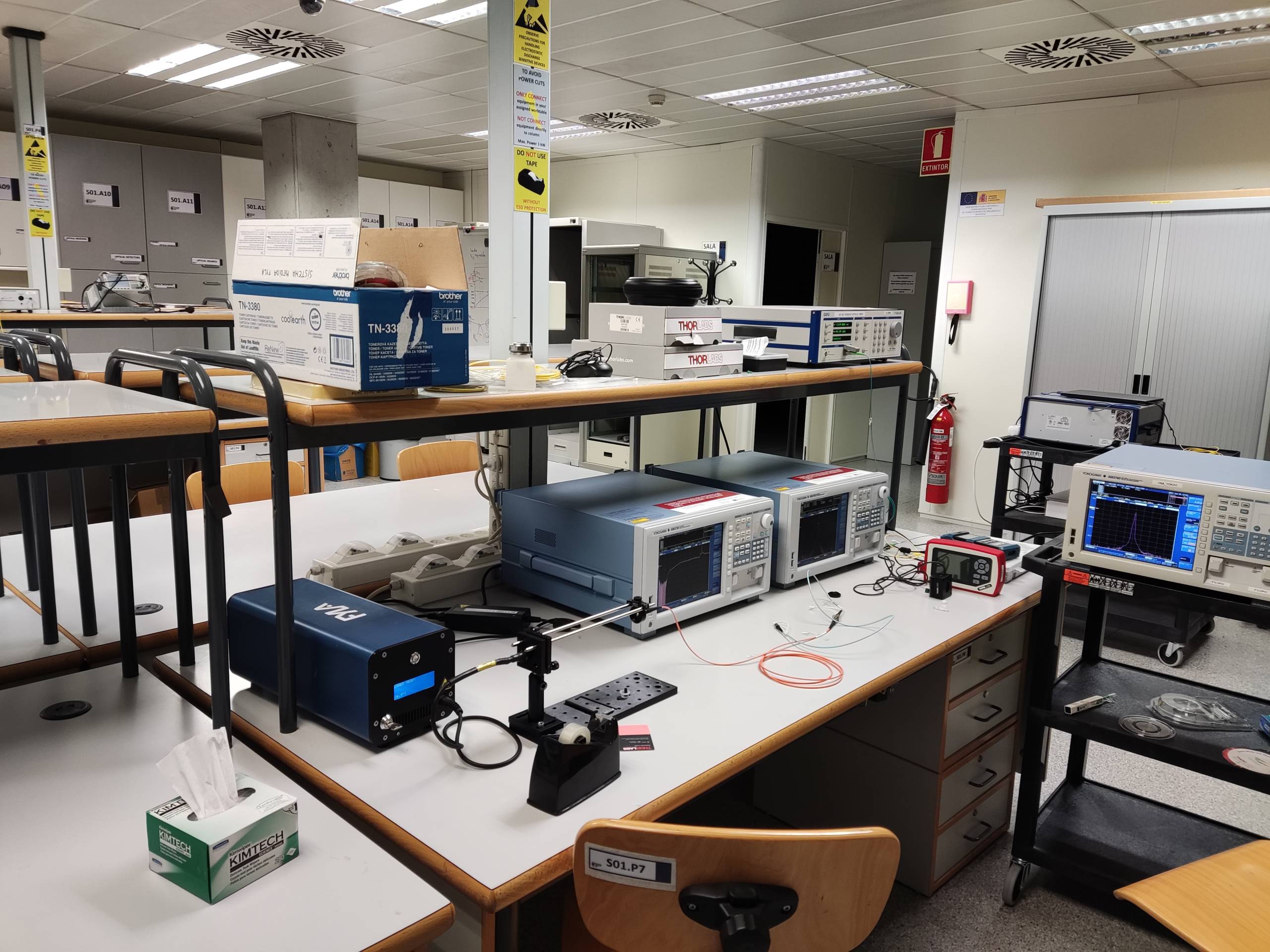Facilities
The Photonics Research Labs have the last generation infrastructure for characterization of passive and active optical components, photonic integrated circuits and electro-optical devices. Thanks to its advanced facilities, experimental implementation and testing of optical communication systems, as well as, fabrication and characterization of sensors and filters over optical fibre can be carried out.
- Fiber optic characterization (attenuation, chromatic dispersion, polarization dispersion…)
- Characterization of passive and active optical devices (optical modulators, optical amplifiers, filters…).
- Verification of optical networks and fibre links.
- Fabrication and characterization of optical filters.
- Fabrication and characterization of optical sensors for building monitoring, temperature and characterization of materials.
- Design and characterization of photonic integrated circuits.
- Performing of fusion splicing for different types of optical fibres.
- Testing of optical fibre links and electrical systems in terms of Bit Error Ratio up to 43.2 Gbps.
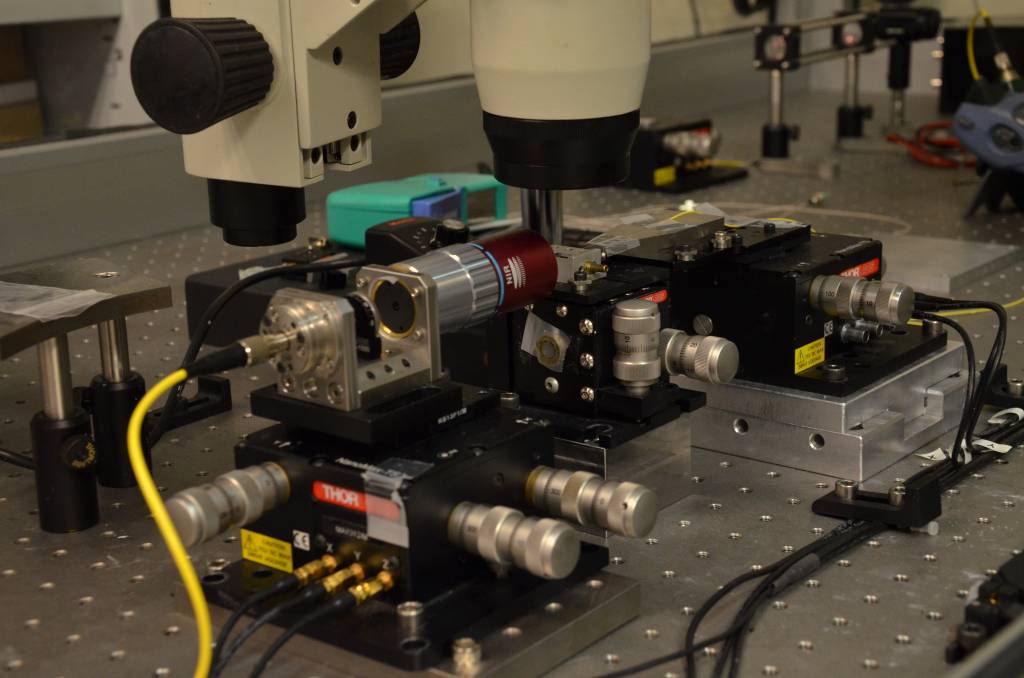
Climate chamber
Controlled environment in humidity and temperature.
Certain experiments must be carried out under particular conditions of humidity (from 10 to 95%) and temperature (from -40 to 100 ºC) or cycles of them by means of a climatic chamber available in the laboratory. Beside this climatic chamber, several tube furnaces up to 1200 ºC are available too.
Optical sources
The PRL counts on a wide range of optical sources with different specifications and characteristics.
- A tunable optical source in the O band (from 1260 to 1360 nm)
- Tunable optical sources in the S, C and L bands (from 1460 to 1625 nm)
- Tunable optical source which combines high output power (more than 10 dBm) with ultra-low Source Spontaneous Emission (SSE)
- Array of 40 tunable optical sources spaced 0.8 nm each other in the C band.
- Amplified Spontaneous Emission (ASE) broadband light sources with output powers up to 20 dBm in the C and L bands, pulsed lasers, high power Argon and Helium-Cadmium lasers.
Optical Instrumentation
Special instruments are necessary to measure and analyze certain parameters in the optical domain as an Optical Sensing Interrogator, Auto/Cross-Correlator and Polarization Optical Analyzer.
- Optical Signal Analyzers
- Optical Oscilloscopes
- Optical Spectrum Analyzers: Several optical spectrum analyzers are available with a full wavelength range from 600 to 1700 nm and a high wavelength resolution up to 10 pm. Moreover, an Optical Complex Spectrum Analyzer is able with ultra high resolution (80fm) and performs phase measurements of discrete spectral components of optical signals with a repetitive pattern.
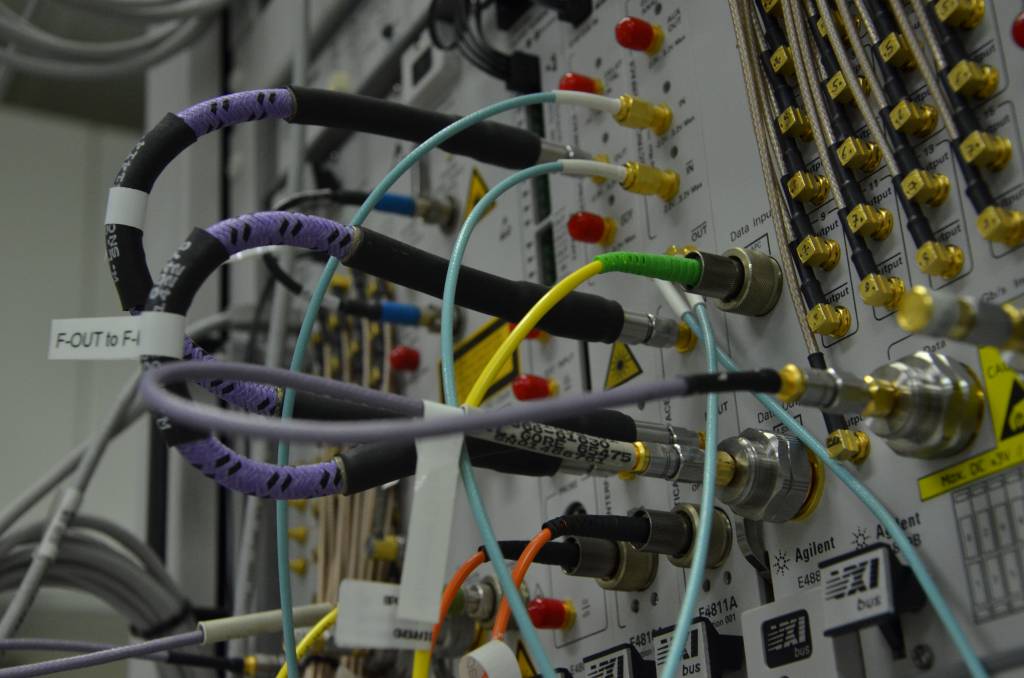
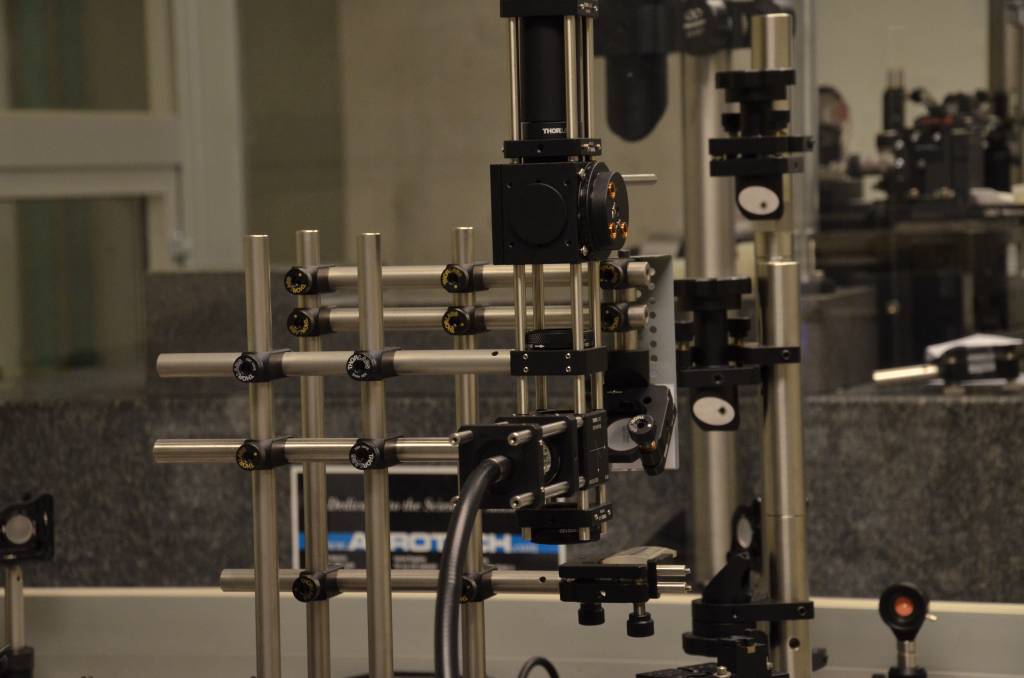
RF instrumentation
- Electrical real time oscilloscopes up to 20 GHz of analog bandwidth and 100 GS/s of sample rate (on 2 Channels) and sampling oscilloscopes with electrical and optical detection modules with supported filtering rates up to 43.018 Gbps and 80 GHz of bandwidth.
- This laboratory is equipped with different electrical analyzers with a bandwidth up to 50 GHz. Vector network analyzers measure the amplitude and phase properties of an electrical and electrooptical components. Advanced electrical spectrum analyzer is able to carry out a signal analysis with demodulation capabilities.
Signal processing
Lab is equipped with different electrical signal generators which are able to generate radiofrequency signals up to 25 GHz, arbitrary waveform generator up to 24 GS/s.
Equipment for SDH/SONET digital systems verification, a programmable CATV head-end for frequency plans generation with 159 channels from 44 MHz to 998 MHz.
Also, several Bit Error Ratio testing (BERt) systems with pattern generators and error detectors up to 43.2 Gbps are available

